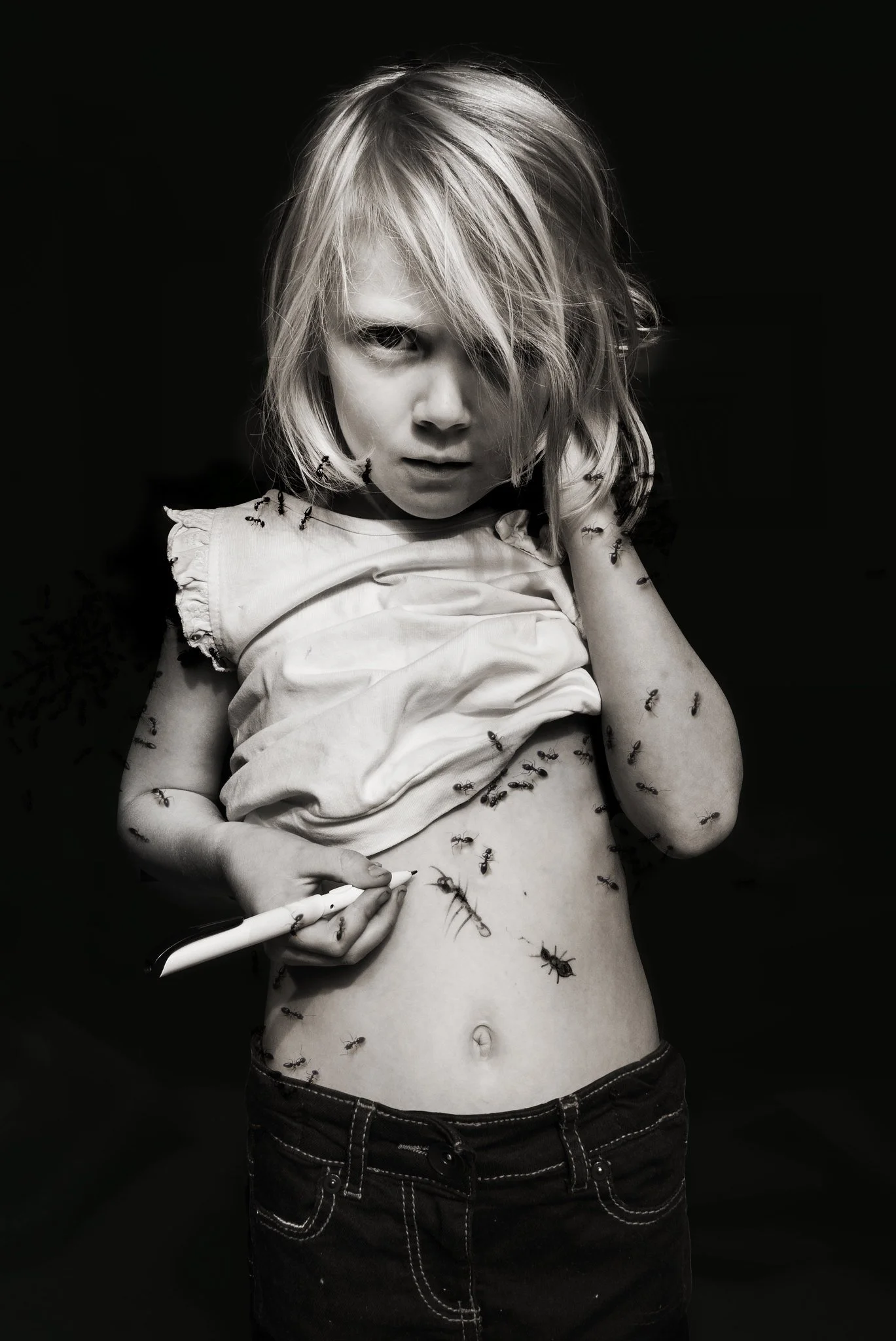Mythical REALISM
Fig 1. HALSALL, 2016 Daisy and the ants
"suggest that the panic over the lsos of the real is actually a displacement or projection of panic over the potential loss of our dominant and as yet unsuccessfully challenged investments in the photographic real" (Kember, cited in Liz Wells, et al. 2019)
Much of my previous work was heavily photo-manipulated. I struggled and often questioned with why I needed to 'tamper' with the image. I recall a time within my memory, when darkroom techniques were the only reasonable route to edit an image, even this process challenged my concept of the photograph as a document of truth.
I find the motivation for editing images an interesting thought experiment, why, when faced with a blue sky and rolling hills, must we enhance the blue, and remove an unwanted cloud?
"are we betraying history? Are we asserting the easy dominion of our civilisation over all times and all places as signs that we casually absorb as a form of loot " Rosler (1991:55)
Is it vanity, or are we perhaps trying to assert control over a memory, sanitising it. As if by editing that image of a past moment, we are editing our own memories. A form of unreasonable control.
Reflecting on my previous work, I can explore my personal motivation for photomanipulation. Some images I edited for vanity, some because I felt the image was aesthetically balanced with a foreground detail removed. But there are other creative reasons.
Daisy and the ants was an image I created 8 years ago. It features my child, covered in ants. Making the truth more interesting, was an indulgent thought process I used when creating images. The image is a blend of a portrait of my child, and some ants we found in the garden, it's creation was prompted by a comment Daisy made when poorly "my skin feels like it's covered in ants". I can challenge the indexicality of this image, Daisy and the ants is not a photograph of my daughter it is not a photograph of ants, it is a photograph of a feeling, a sensation, which cannot be figuratively translated. Therefore I must adopt alternative practices, visual languages to represent.
"Wearing (Gillian) proposes that the capturing of of the profundity and and experience of everyday life is not intrinsic to the traditional styles or compositions of the documentary photograph, but is more effectively reached through artistic intervention and strategy". (Cotton 2014:31)
Maybe I can justify this manipulation there is an honesty to it? The manipulation feels obvious, and yet real enough to translate the 'sensation' and there is an honesty to my intention. It's manipulation is obvious. But when does a photograph cease to be and become a digital illustration?
REFERENCES
WELLS, L. 2019. The photography reader. London: Routledge. pp.203.
ROSLER, M. 2019. Image simulations, computer manipulations; some considerations. Ten 8 Digital dialogues. pp55
COTTON, C. 2014. The photograph as Contemporary Art. NY, NY: Thames & Hudson. pp.31.
FIGURES
Figure 1. Halsall, Penny. 2016 Daisy and the ants
